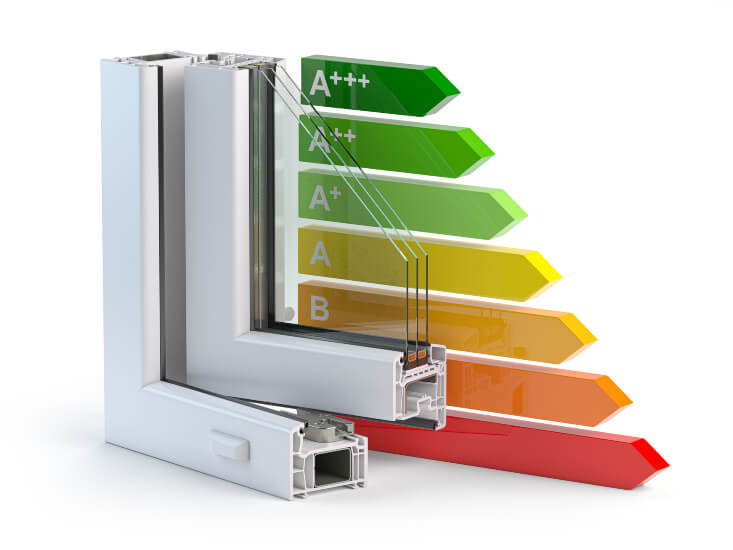Understanding Window Ratings: What to Look For

Understanding Window Ratings: What to Look For
It’s time to replace your windows. You’ve set your budget, determined what your style is, and figured out exactly what you need. Now you want to get the best bang for your buck and the best windows available on the market. How do you decipher the ratings on these windows? What are the important ratings to look for? Here’s our guide to figuring it all out.
Energy Star
This is a qualification signified by a sticker you’ll see on any energy efficient product. Seeing this label means you are getting the best you can get in energy efficiency. How is this determined?
NFRC
You may have heard of the NFRC. This is a third-party non-profit organization that rates windows for their energy efficiency. When we read window labels for ratings we are basically just judging energy efficiency. No other factors come into play. NFRC stands for National Fenestration Rating Council. Understanding what their ratings mean is the key to purchasing quality energy efficient windows.
Bear in mind, the climate in which you live will affect the rating that the NFRC will assign to windows in your region.
There are four basic qualifications that Energy Star windows must meet to obtain the Energy Star label. They are very strict guidelines that are set by the United States Department of Energy. These qualifications are as follows:
- U-Factor
U-Factor is a measurement of how much heat your windows can keep from transferring. If you have a lower u-factor rating, heat has a more difficult time escaping. Basically, you are looking for a lower u-factor. You want heat to stay in during the winter months and you want heat to stay out during the summer months. - SHGC
This is the Solar Heat Gain Coefficient. It measures the value a window has in deflecting heat from the sun. Keep in mind that in climates where we heat most of the year, solar heat gain can help your heating system. In climates where we are more concerned with keeping heat out, a lower SHGC will help your AC system. The right SHGC value could mean real savings on energy bills when it’s hot outside. - VT
Visible Transmittance is a measurement of how much light can come through your window. In this category we want to look for a higher level. That is, if you want to save money on your light bills. The range you need to look for when you look at Visible Transmittance is somewhere between 0 and 1. The key to energy efficiency and saving on energy is letting in more light and less temperature change. Finding windows that have high VT values will mean that you can make the most of the natural light that comes into your home. Since most techniques for influencing SHGC and U -Factor affect VT, you want to try to find the right balance between all three. - Air Leakage As the name suggests, air leakage is a factor that measures how much air is coming into your home through your window. This measurement is presented as (cfm/sq.ft). It is taken in the number of cubic feet of air flowing through one square foot of window. So, you ultimately want the lowest number you can get. The lower the Air Leakage number, the less air you have coming through your window.
*This number is only accurate if your window has been installed properly. If you have not had your windows installed by a professional, you may not be able to trust your Air Leakage Value
One Additional Category
Condensation Resistance
Sometimes there is a measurement that is assessed in addition to these four. That is called Condensation Resistance. It is an optional assessment, but sometimes manufacturers do choose to include it on the NFRC label. Basically this measures how vulnerable a window is to condensation forming on the window. There are many issues that could cause the accumulation of condensation. These could include discoloration, fogging of the glass, warped windows, and even mold. You do not want this buildup to occur. Trust us. So you’re going to look for a value of 1-100 in order to make sure your windows aren’t susceptible to condensation buildup. And you’re looking for a higher number this time. If you have a 0 rating that means there is 0% resistance to the accumulation of condensation on your window.
Again, keep in mind that this rating only applies if your windows have been installed properly.
Energy efficiency is key when it comes to choosing your windows. We hope our handy guide has helped you decipher how to make the best decisions in this arena.
Home Supply Window & Door
Whether you need help replacing windows in your office or home, you want to choose the highest quality windows you can afford, and we want to help you do that! For your window replacement needs, make sure to contact the professionals at Home Supply Window & Door. We can help you choose the right windows to meet your needs. In the New York area, we are your source for all things window and door. Have questions, visit our website or just give us a call at (973) 949-5401.
